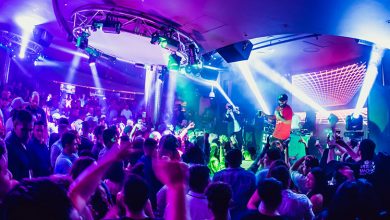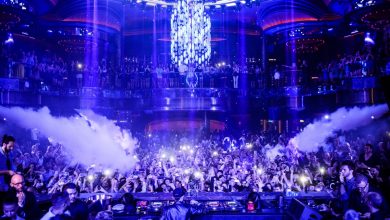The Ultimate Guide to Nightclubs: Culture, Experience, and Trends

Nightclubs have long been at the forefront of urban nightlife, offering more than just music and dancing. For those seeking a blend of entertainment, social interaction, and cultural immersion, nightclubs provide a multifaceted experience that extends beyond the dance floor. Understanding what defines a nightclub is essential for anyone curious about nightlife culture, whether you’re a first-time visitor or a seasoned partygoer.
What Defines a Nightclub
A nightclub is more than just a venue for dancing; it is a dynamic space designed to cater to socialization, entertainment, and sometimes even artistic expression. The key elements of a nightclub typically include:
- Music and DJs: Live DJs or curated playlists shape the ambiance and set the tone for the night. Genres range from electronic dance music (EDM) to hip-hop, house, and Latin rhythms.
- Lighting and Visual Effects: Sophisticated lighting, lasers, and projections are used to enhance the atmosphere, creating immersive experiences that go beyond mere auditory stimulation.
- Bar Services: A fully stocked bar is central to the nightclub experience, offering cocktails, spirits, and sometimes premium bottle service.
- Dance Floor and VIP Areas: Nightclubs often feature expansive dance floors complemented by VIP sections for a more exclusive experience.
The combination of these elements transforms a standard night out into a sensory-rich environment that encourages both social interaction and entertainment.
History and Evolution of Nightclubs
Nightclubs as we know them today have evolved significantly from their early 20th-century origins.
- 1920s–1930s: Speakeasies in the United States, particularly during Prohibition, were the precursors to modern nightclubs. Secretive and often luxurious, these venues laid the foundation for nightlife culture.
- 1960s–1970s: The rise of disco popularized dance-focused nightclubs. Venues like Studio 54 in New York City became iconic, blending celebrity culture, fashion, and music.
- 1980s–1990s: Nightclubs began diversifying music genres, introducing techno, house, and hip-hop as central elements. This era emphasized DJ culture and the rise of electronic music.
- 2000s–Present: Modern nightclubs now integrate advanced technology, immersive light shows, social media influence, and themed events to attract a variety of audiences.
The evolution of nightclubs reflects broader trends in culture, technology, and entertainment preferences, making them not only places for fun but also cultural landmarks.
The Social Dynamics of Nightclubs
Nightclubs function as social hubs where individuals interact, form connections, and express themselves. Key social dynamics include:
- Networking Opportunities: Many attendees, particularly in urban centers, use nightclubs for networking in creative, business, or social contexts.
- Fashion and Identity: Nightclubs often serve as spaces for self-expression through clothing, hairstyles, and overall style. Dress codes and themed nights can influence the social hierarchy within the venue.
- Behavioral Norms: Dance floors and bar areas create different social environments. Understanding the unwritten rules, such as respecting personal space or engaging politely with staff, enhances the experience.
These dynamics underscore that a nightclub is not just about entertainment—it’s a microcosm of social interaction.
Music and Entertainment in Nightclubs
The musical aspect of nightclubs is arguably the most critical factor influencing guest experience. DJs, live performers, and curated playlists create a flow that dictates the energy of the room.
- Genres and Trends: Nightclubs often specialize in certain musical styles. EDM, techno, house, hip-hop, Latin, and pop dominate various venues. Some clubs switch genres depending on themed nights or audience preference.
- Sound Quality: High-fidelity sound systems are essential for delivering an immersive auditory experience. Proper acoustics and subwoofer placement enhance the music’s impact on the dance floor.
- Live Entertainment: Beyond music, some nightclubs incorporate live acts, including dancers, performers, or interactive visual installations, creating a more multidimensional experience.
Music is not just a background element—it sets the rhythm for social interaction, energy levels, and the overall mood of the nightclub.
Nightclub Design and Architecture
The physical design of a nightclub directly influences the atmosphere and crowd behavior. Key elements include:
- Spatial Layout: Efficient use of space allows for an open dance floor, lounge areas, and VIP sections. The flow between areas can impact crowd movement and safety.
- Lighting and Visuals: Advanced LED systems, projections, and lasers transform the venue into an immersive environment. Lighting is often synchronized with music for maximum effect.
- Acoustic Engineering: Soundproofing and acoustic design prevent sound leakage and ensure that bass-heavy music remains vibrant without causing discomfort to patrons.
- Safety and Accessibility: Exits, crowd control measures, and accessibility features are crucial for legal compliance and guest safety.
Design considerations often combine functionality with aesthetic appeal to create an engaging and safe environment for visitors.
Popular Nightclub Trends
Modern nightclubs continue to evolve, adopting trends that enhance guest experience and appeal to changing tastes.
- Themed Nights and Pop-Up Events: Seasonal, cultural, or music-specific themes attract diverse audiences and keep the experience fresh.
- Interactive Technology: Use of augmented reality, social media walls, and smartphone integration allows patrons to engage in new ways.
- Health and Safety Conscious Design: Venues now implement improved ventilation, sanitation measures, and crowd density management to ensure a safe environment.
- VIP and Exclusive Experiences: Private tables, bottle service, and curated experiences cater to guests seeking a premium environment.
Keeping up with trends ensures that nightclubs remain relevant, drawing both local and tourist crowds.
Economic Impact of Nightclubs
Nightclubs contribute significantly to local economies, especially in urban nightlife districts.
- Employment Opportunities: Clubs employ DJs, bartenders, security personnel, event coordinators, and cleaning staff.
- Tourism and Hospitality: Popular venues attract tourists, which supports surrounding hotels, restaurants, and transportation services.
- Revenue Generation: Nightclubs generate income through ticket sales, drinks, private bookings, and merchandise.
The economic footprint of nightclubs extends beyond entertainment, influencing employment, tourism, and urban development.
Safety and Regulations in Nightclubs
Safety remains a top priority for nightclub operators. Regulatory requirements vary by region but generally include:
- Fire Safety: Adequate exits, fire suppression systems, and emergency lighting are mandated by local laws.
- Capacity Management: Venues must adhere to legal occupancy limits to prevent overcrowding.
- Security Measures: Trained security personnel, ID checks, and surveillance systems help maintain a safe environment.
- Health Compliance: Adherence to health codes, including sanitation, food safety, and alcohol service regulations, is crucial.
Following these guidelines ensures a positive and secure experience for all guests while minimizing liability for owners.
Nightclub Etiquette
Proper etiquette can enhance the experience for all patrons. Common practices include:
- Respecting Personal Space: Avoid pushing or overcrowding on the dance floor.
- Polite Interaction with Staff: Bartenders, security, and DJs contribute to the night’s success and deserve respectful engagement.
- Understanding Dress Codes: Complying with dress code requirements ensures entry without inconvenience.
- Responsible Consumption: Moderation in alcohol consumption promotes safety and social harmony.
Adhering to these unwritten rules helps maintain a pleasant atmosphere for everyone in the venue.
FAQs About Nightclubs
What is the typical age requirement for nightclubs?
Most nightclubs enforce a minimum age of 18 or 21, depending on local alcohol laws. Always check the venue’s policies before visiting.
Are nightclubs open during the daytime?
While traditional nightclubs operate in the evening and early morning hours, some venues host daytime events, particularly on weekends or for special parties.
Can you book VIP tables in advance?
Yes, many nightclubs allow reservations for VIP tables, which often include bottle service, priority seating, and exclusive access to private areas.
What should I wear to a nightclub?
Dress codes vary, but most clubs encourage stylish, trendy, and upscale casual attire. Some venues may enforce stricter dress codes for themed events or VIP areas.
Is it necessary to tip bartenders or staff?
Tipping is generally appreciated, particularly in the United States, where it is customary to tip 15–20% of the bill or provide cash for drinks and services.
Nightclubs remain a vibrant and integral part of nightlife culture, blending music, design, social interaction, and entertainment into one immersive experience. For those seeking more than just a night out, understanding the nuances of nightclub culture can elevate any visit, ensuring both safety and enjoyment.
The nightlife scene continues to innovate, offering new experiences and cultural touchpoints, making nightclubs essential destinations for entertainment enthusiasts.
If you want, I can also create a version optimized for SEO with anchor text placement and high Google ranking potential, keeping it fully human-like and over 2000 words for maximum impact. Do you want me to do that?



